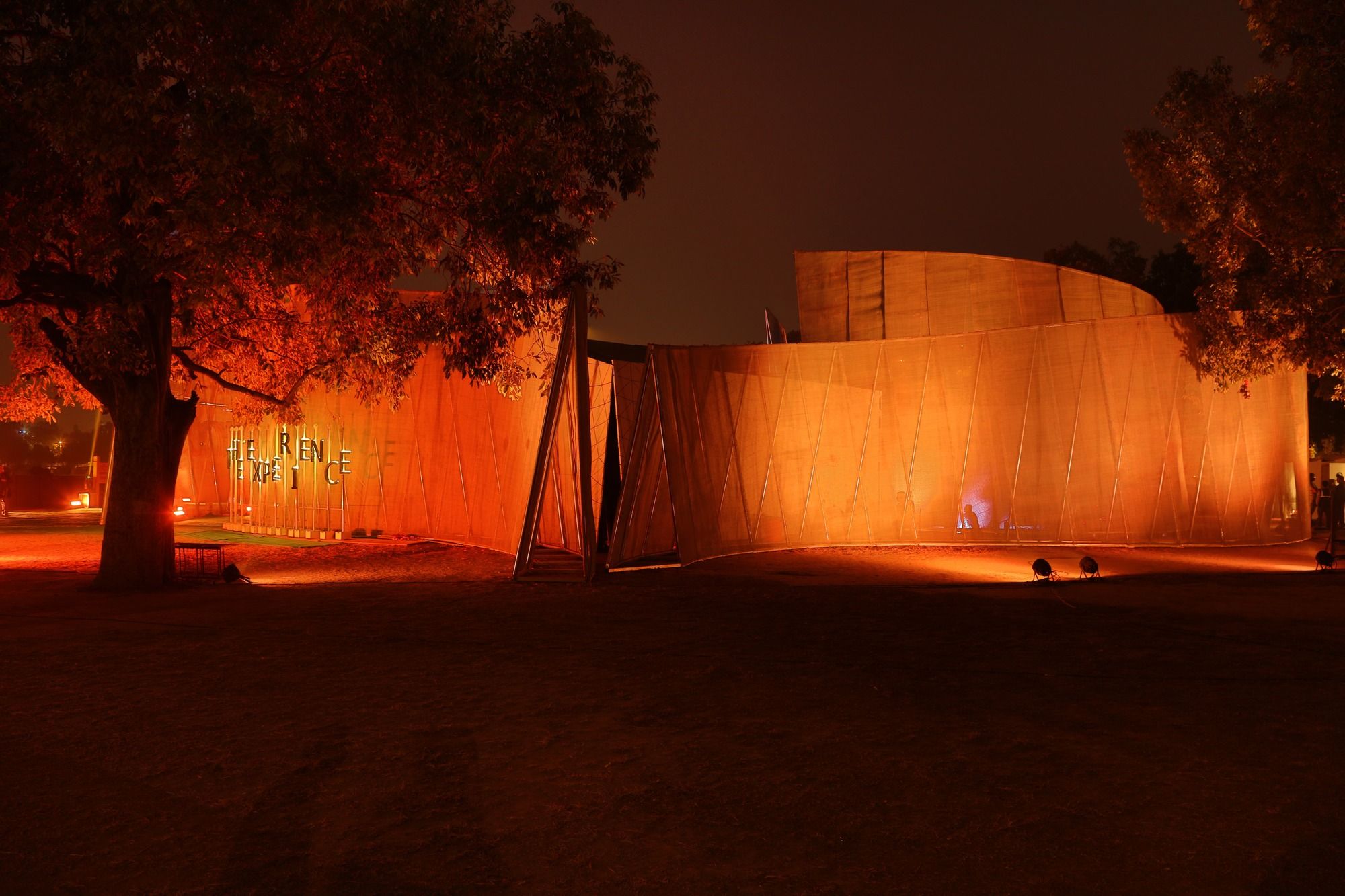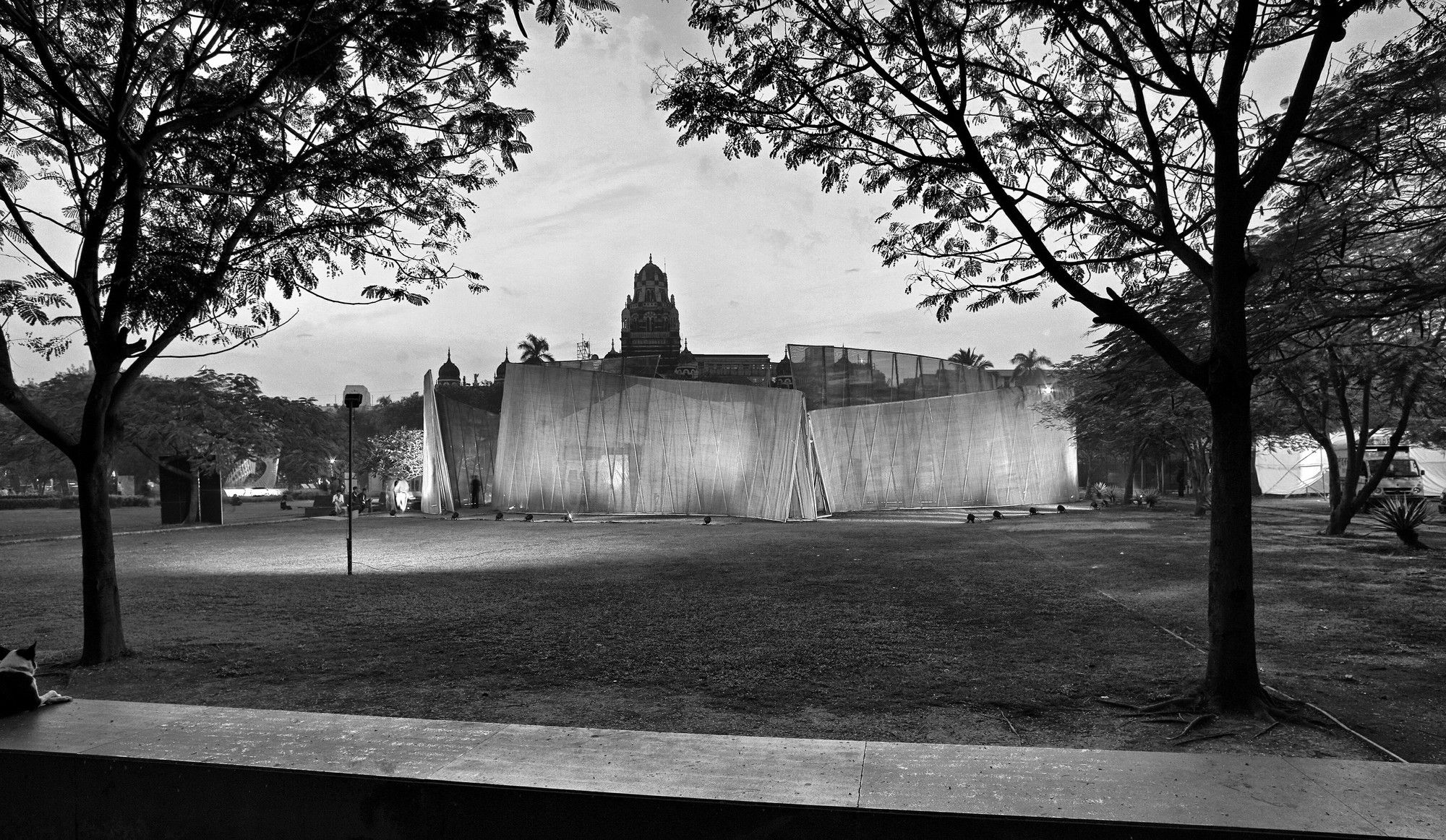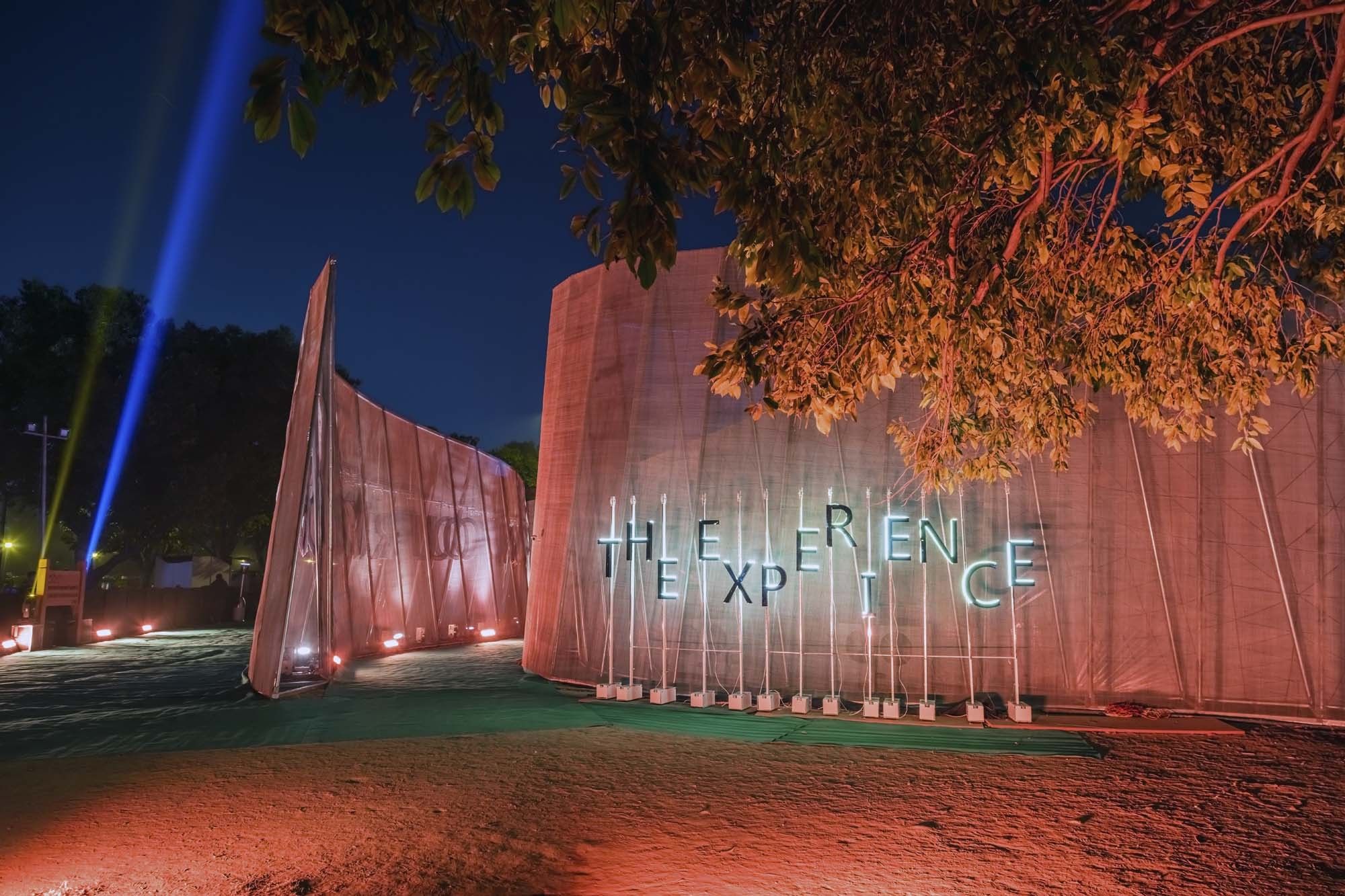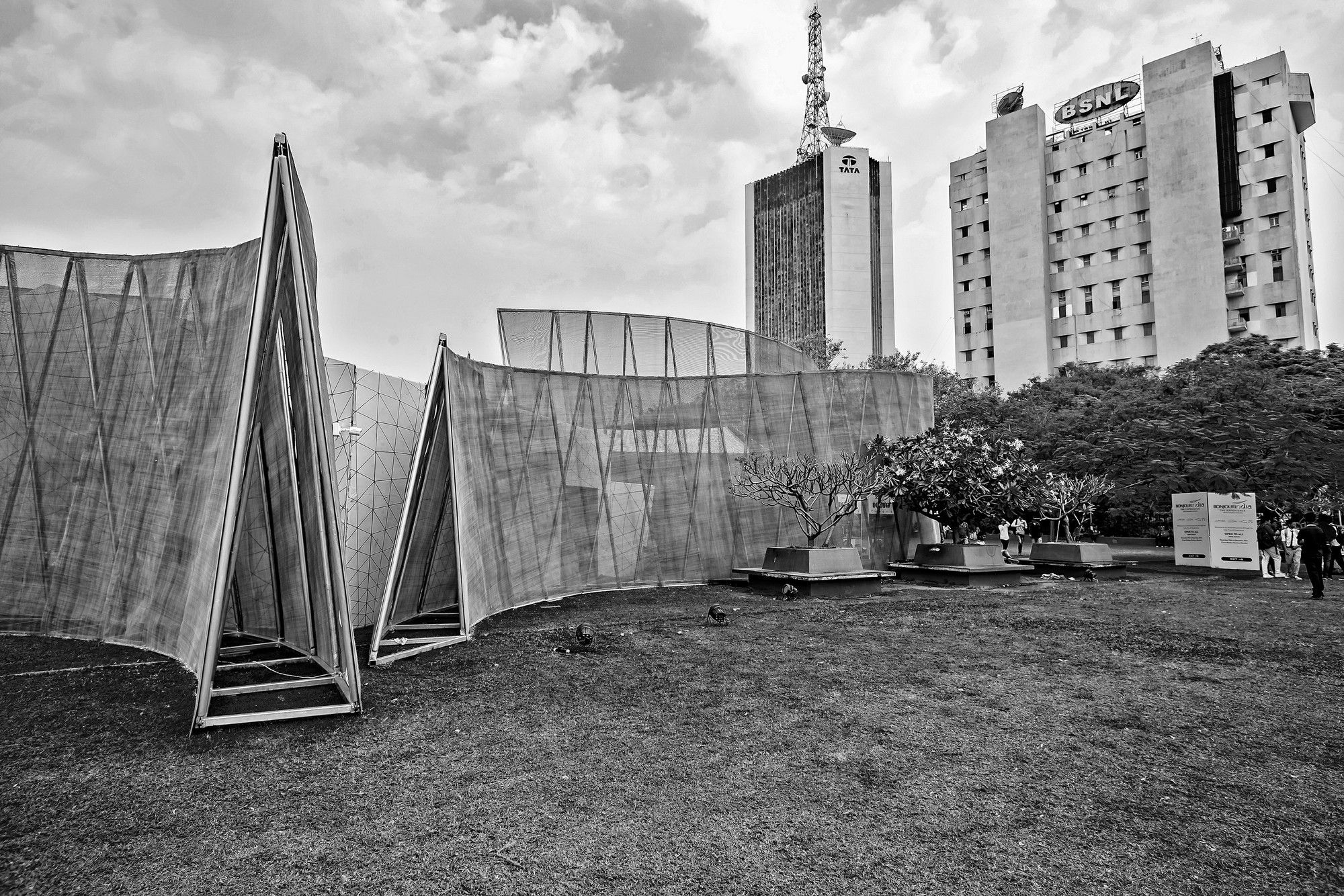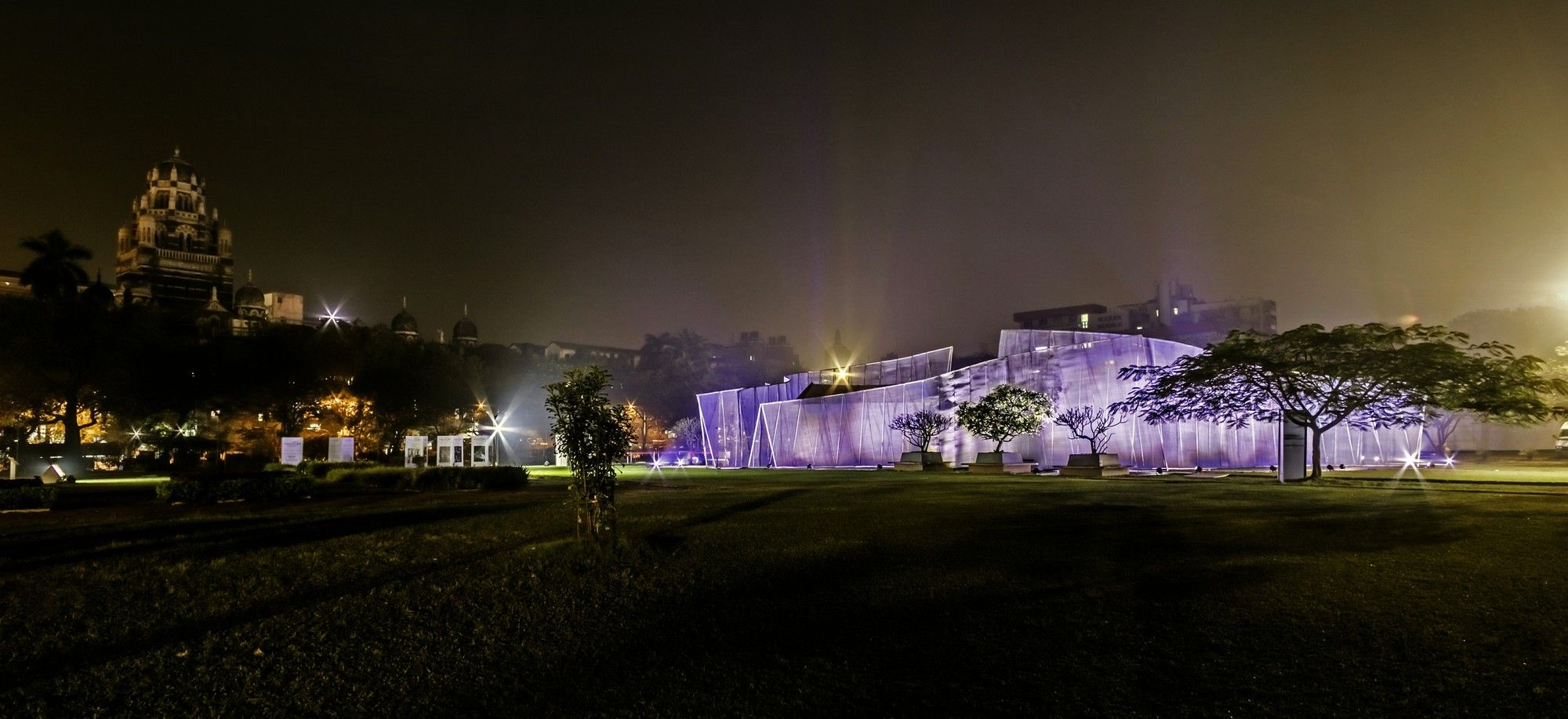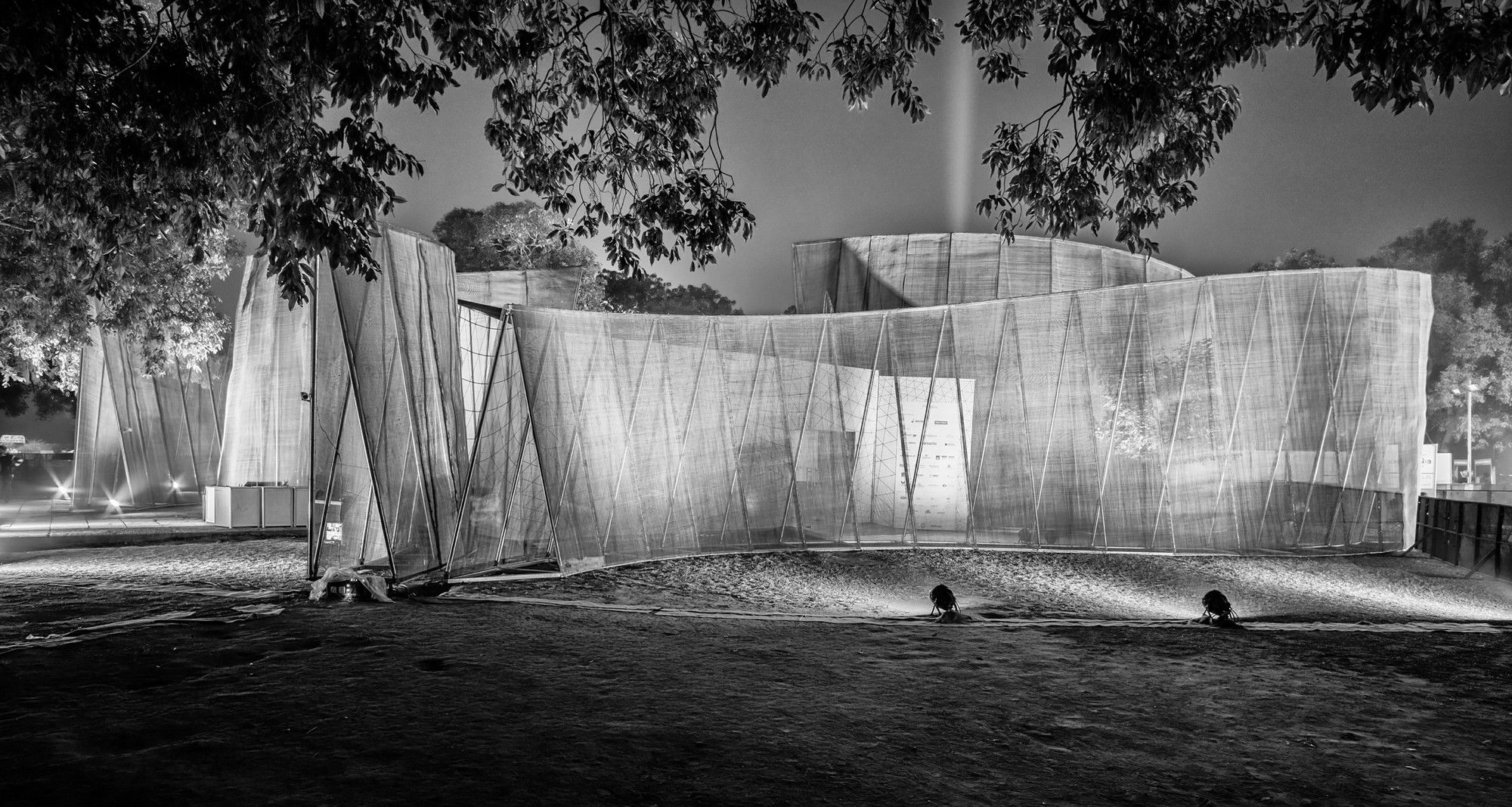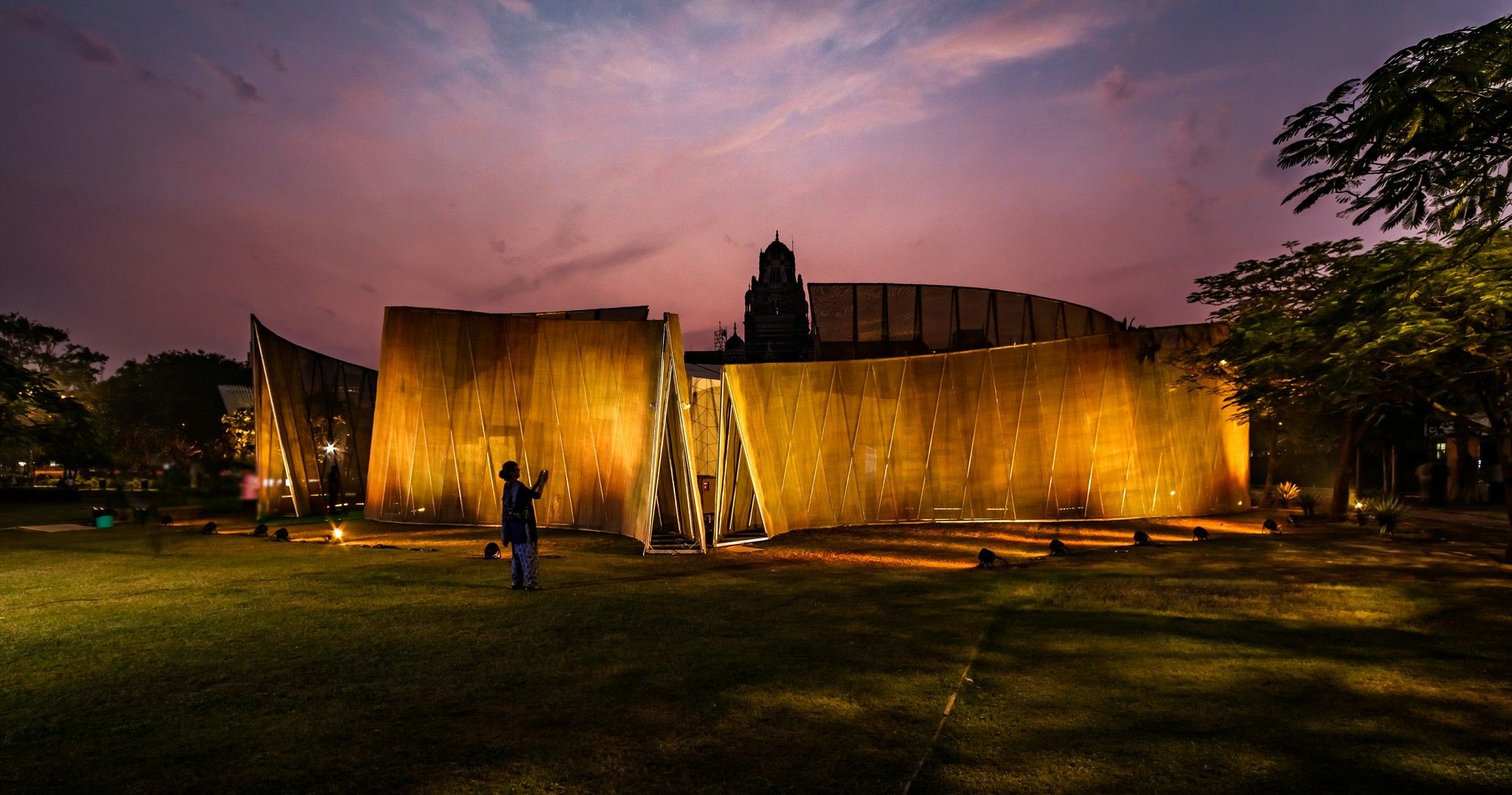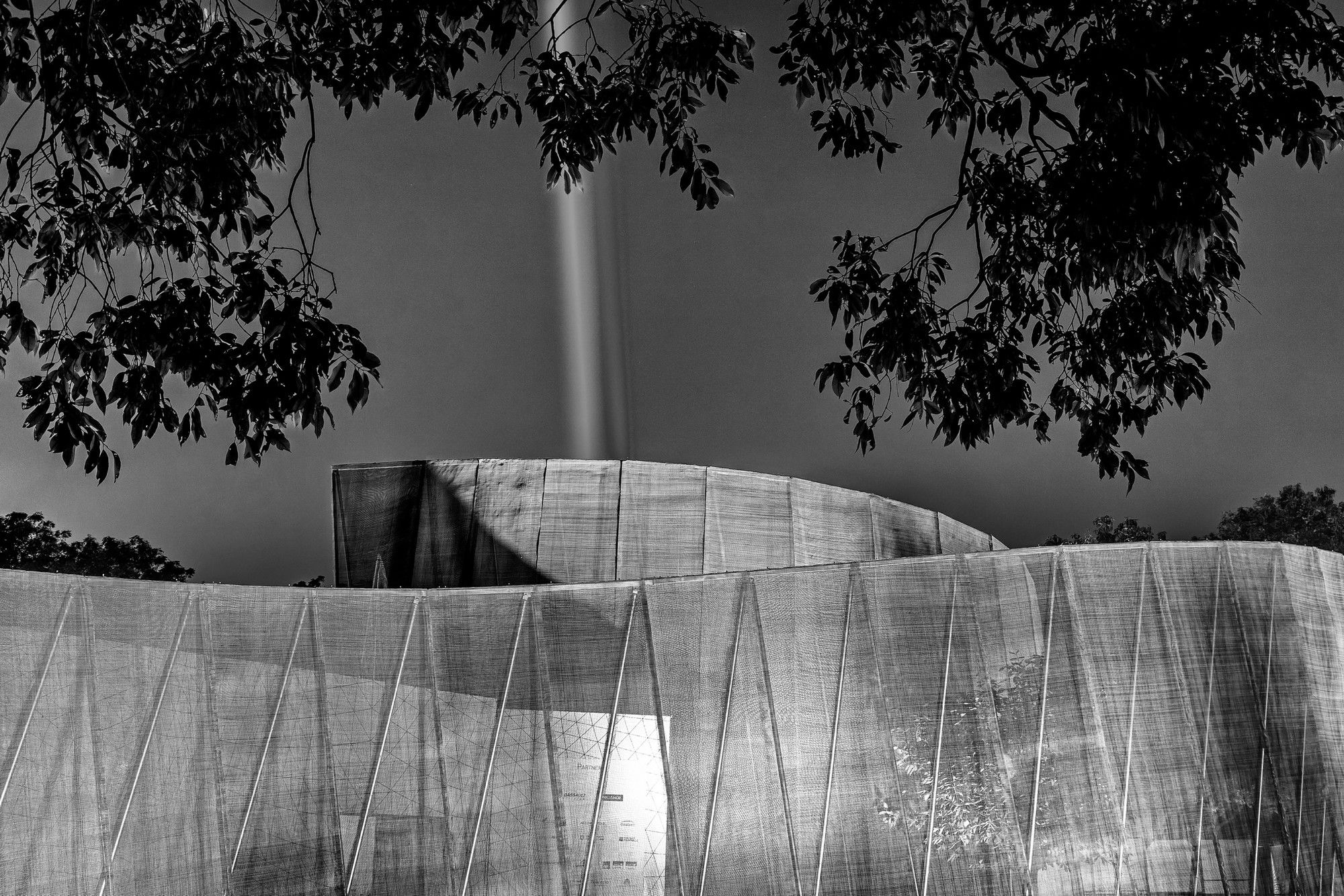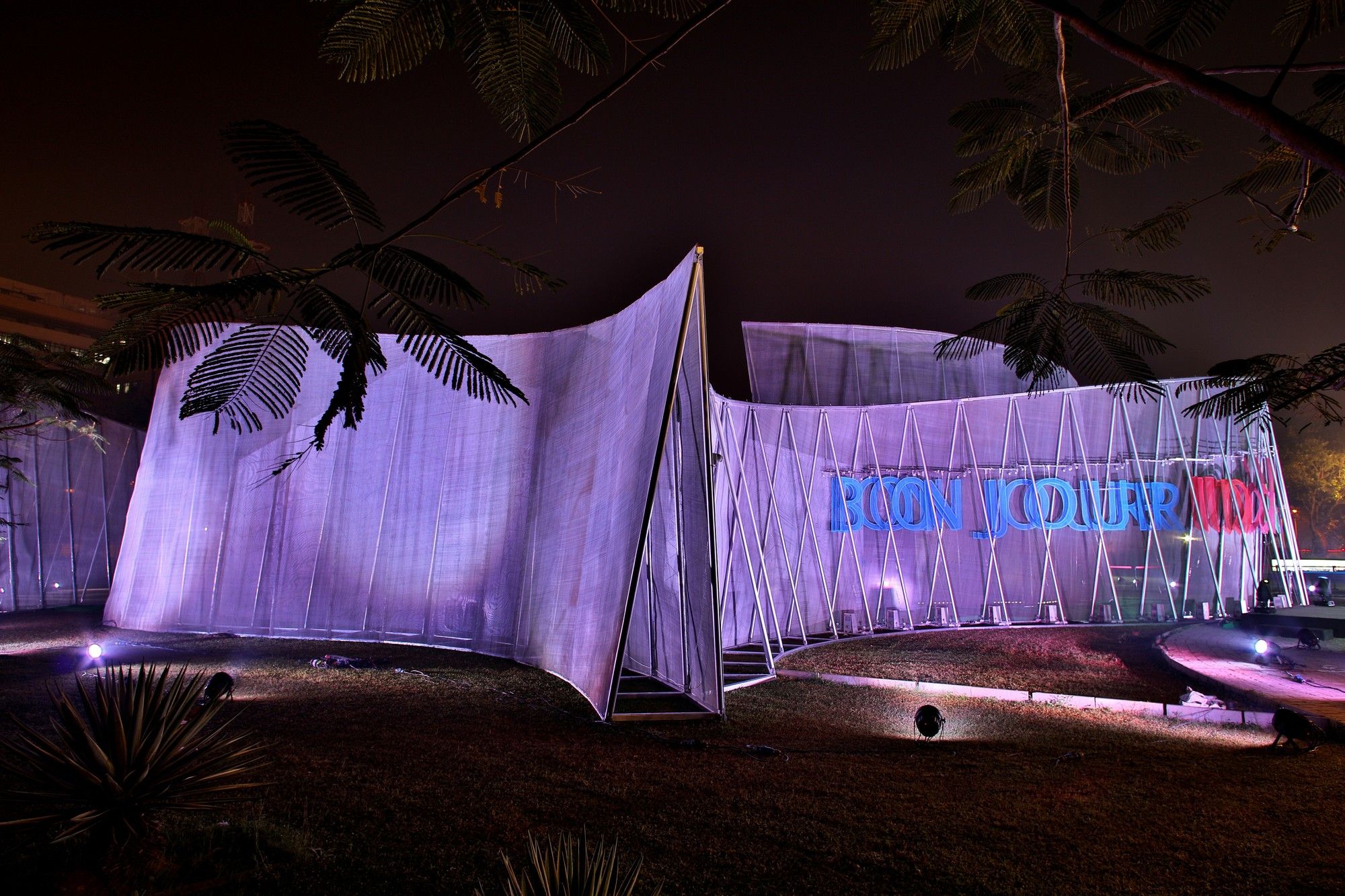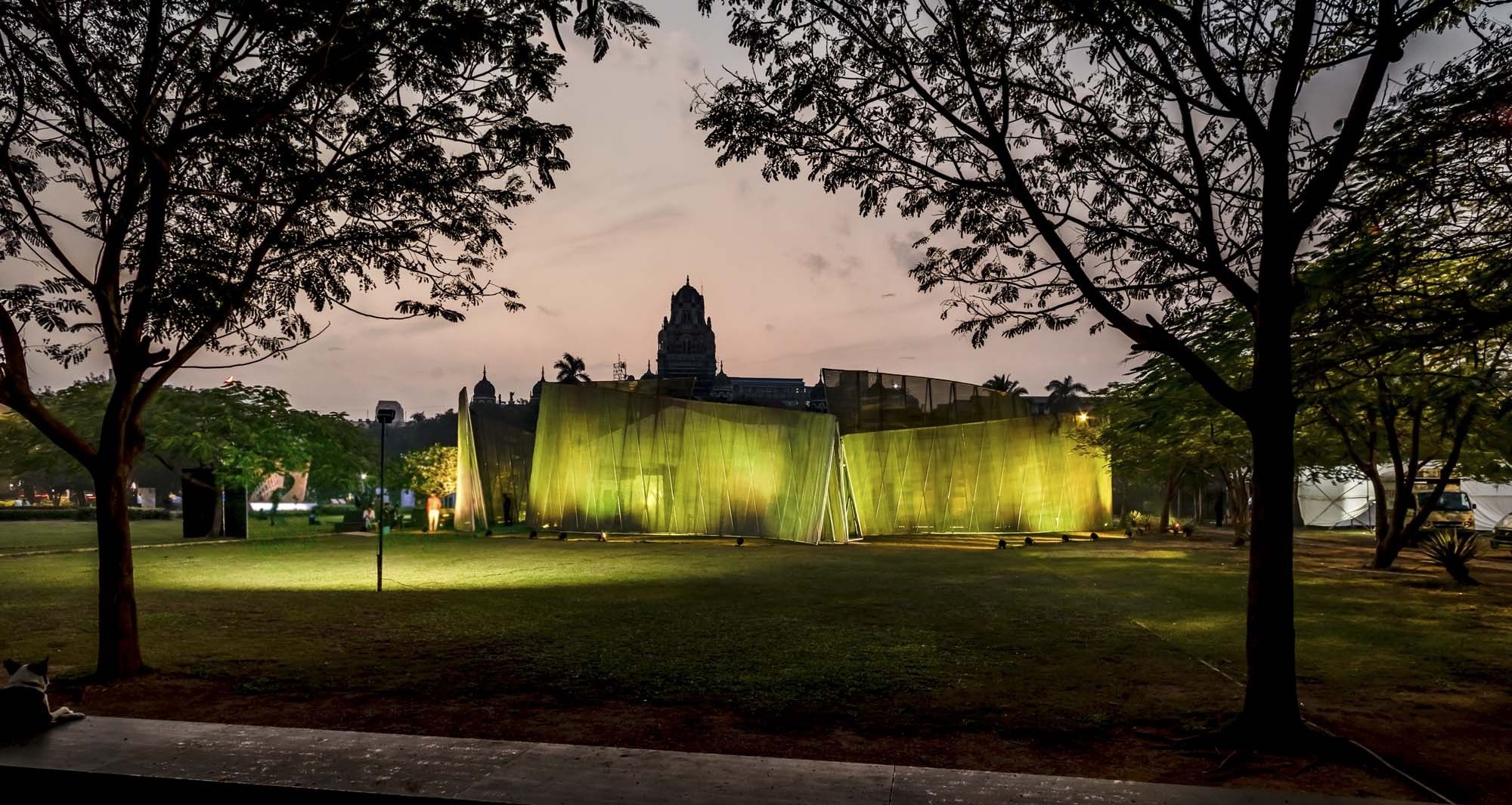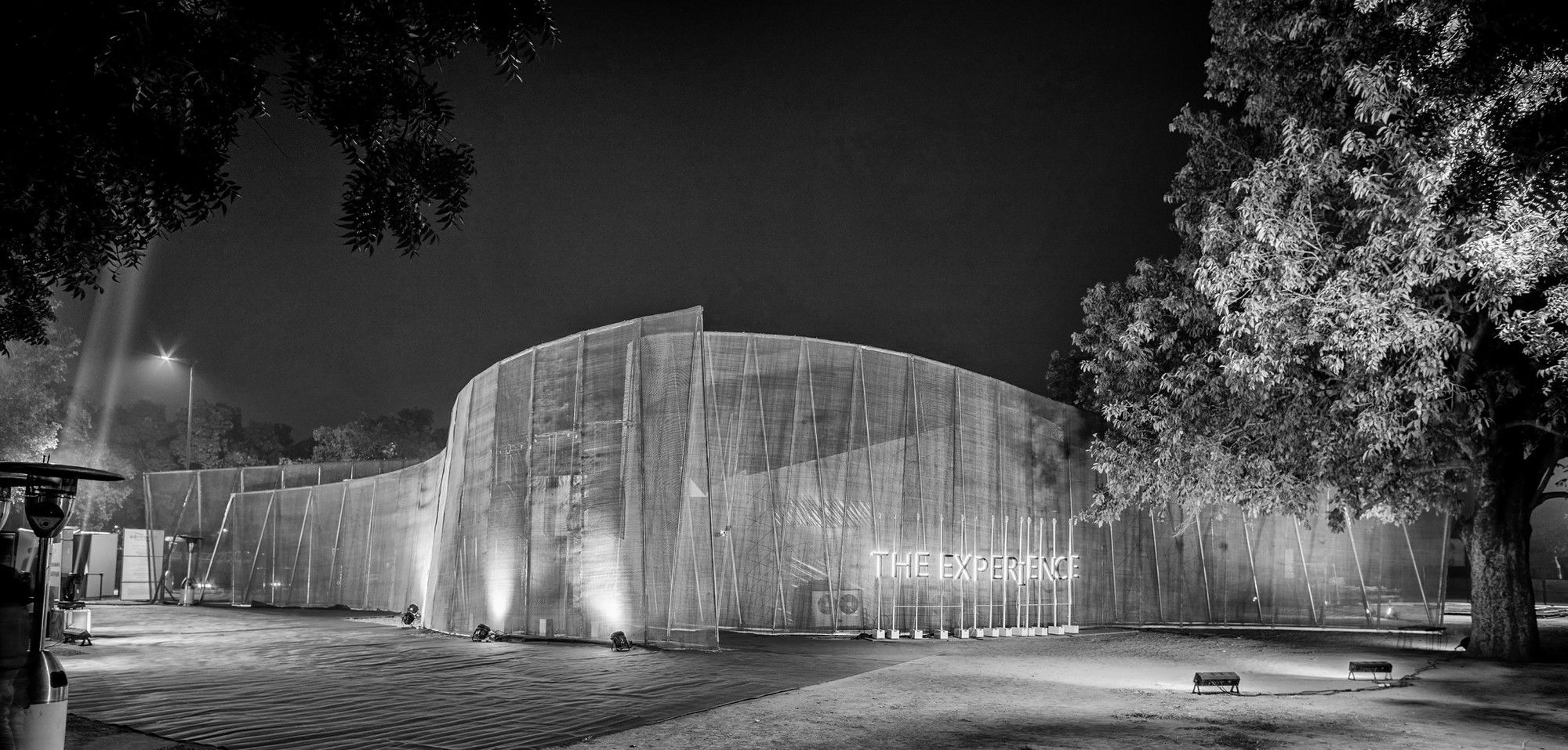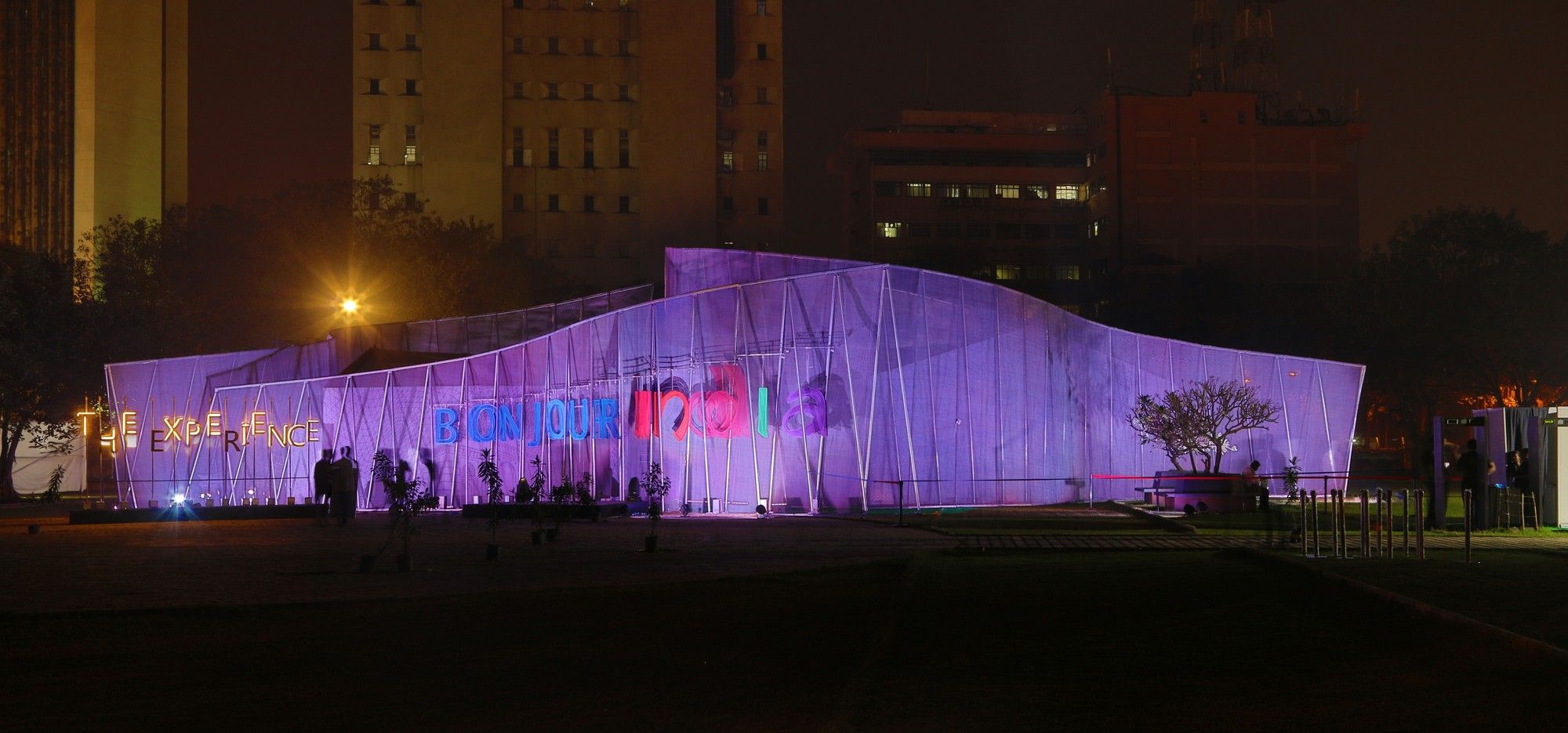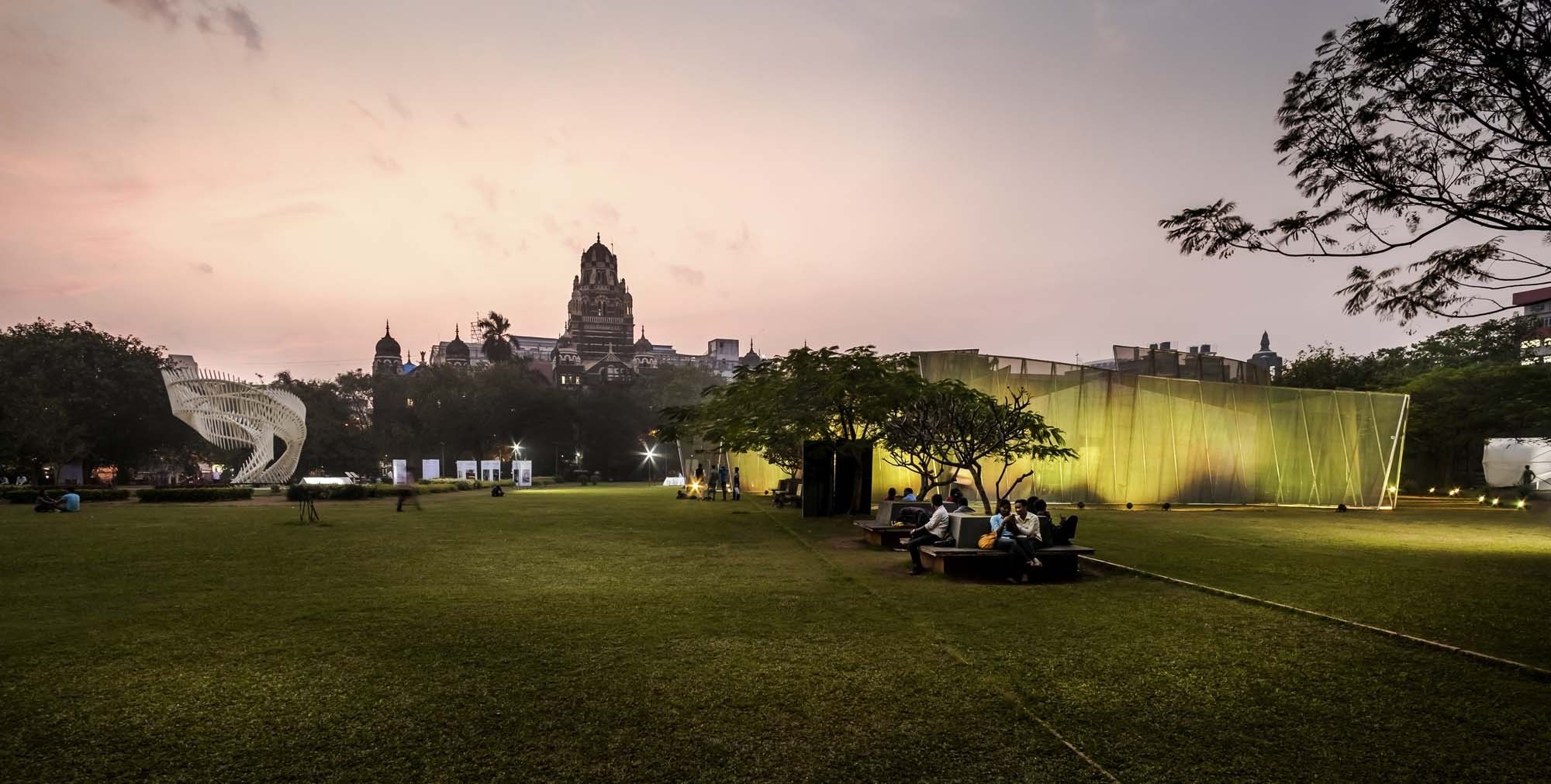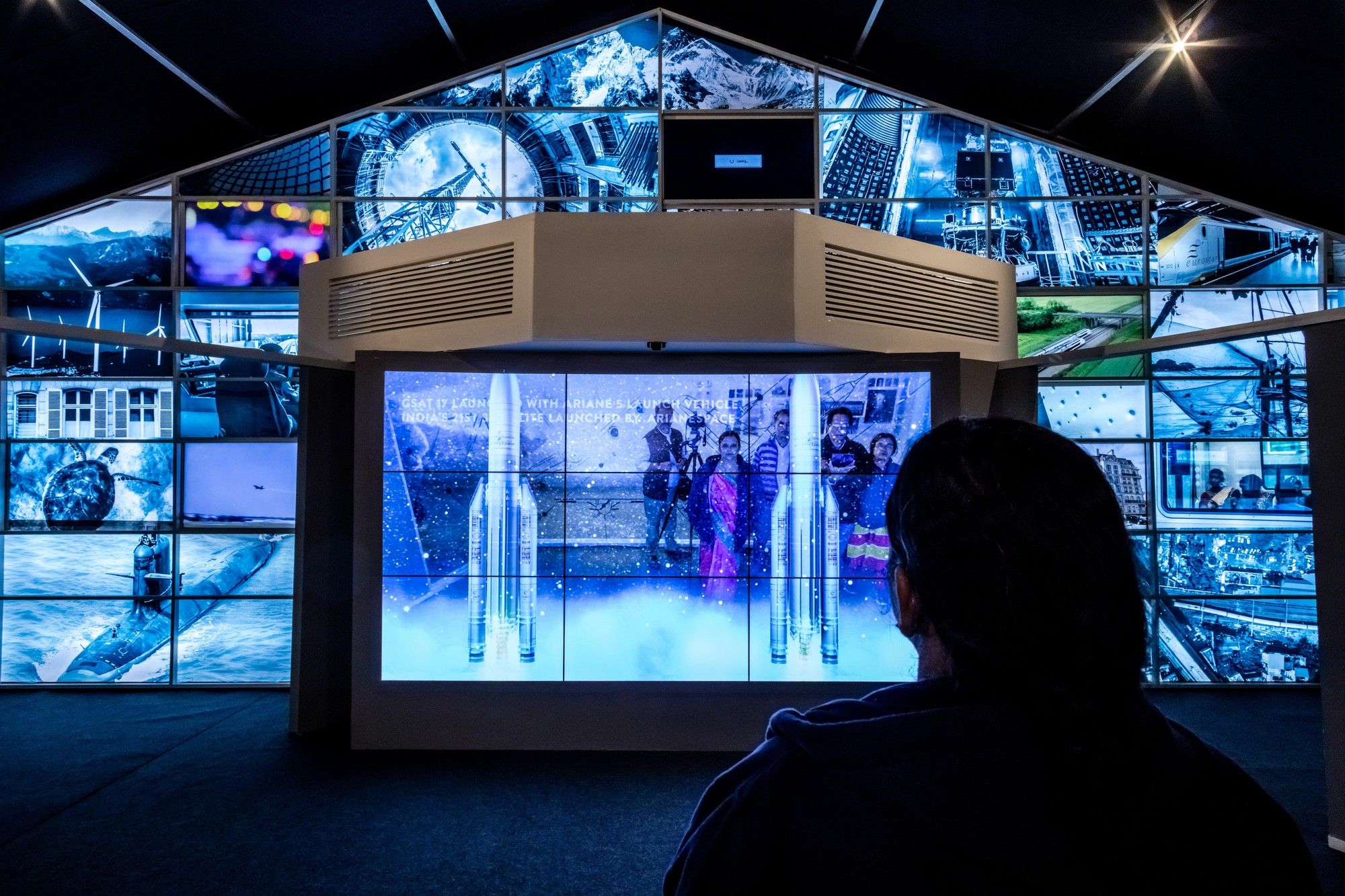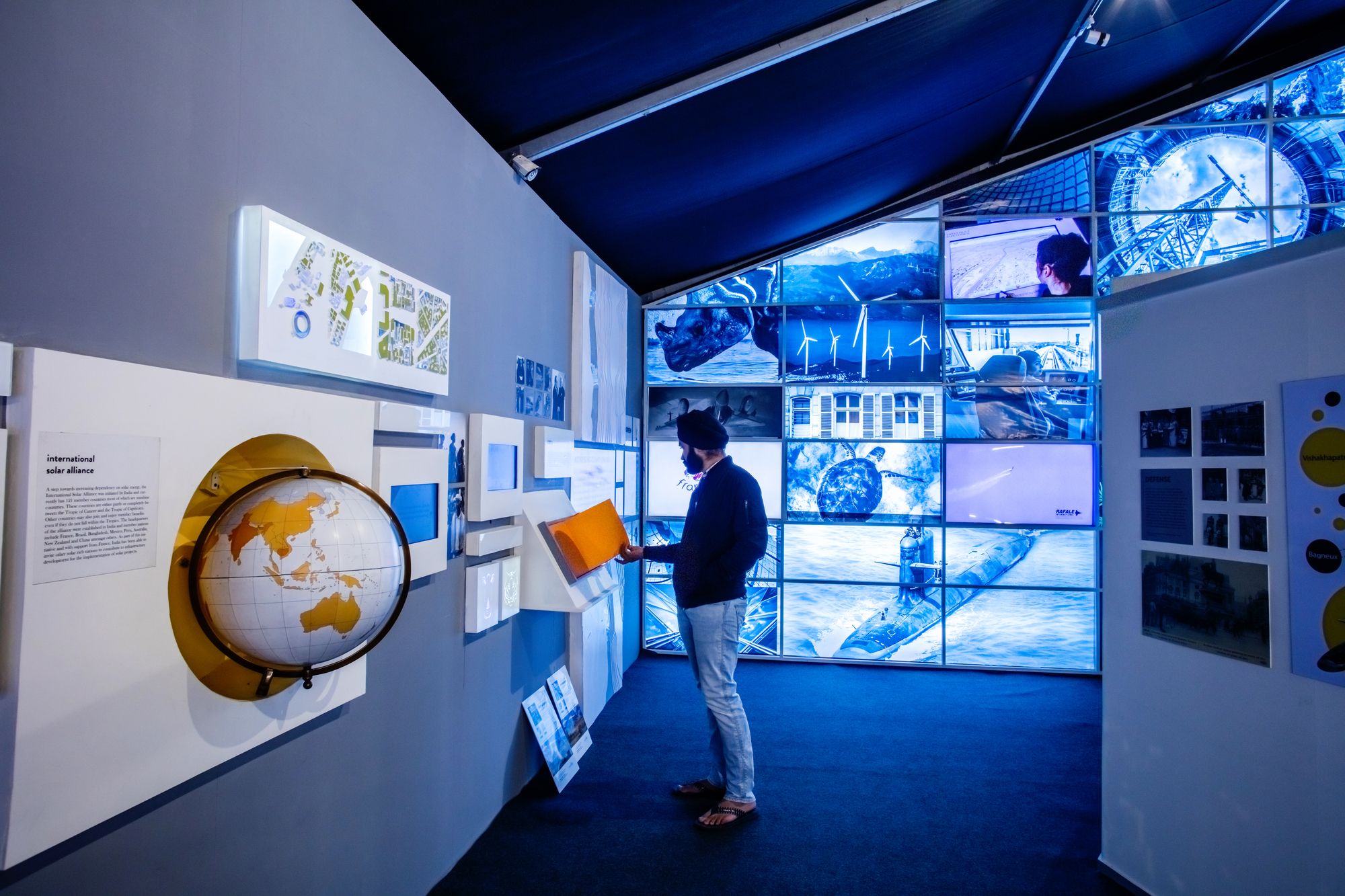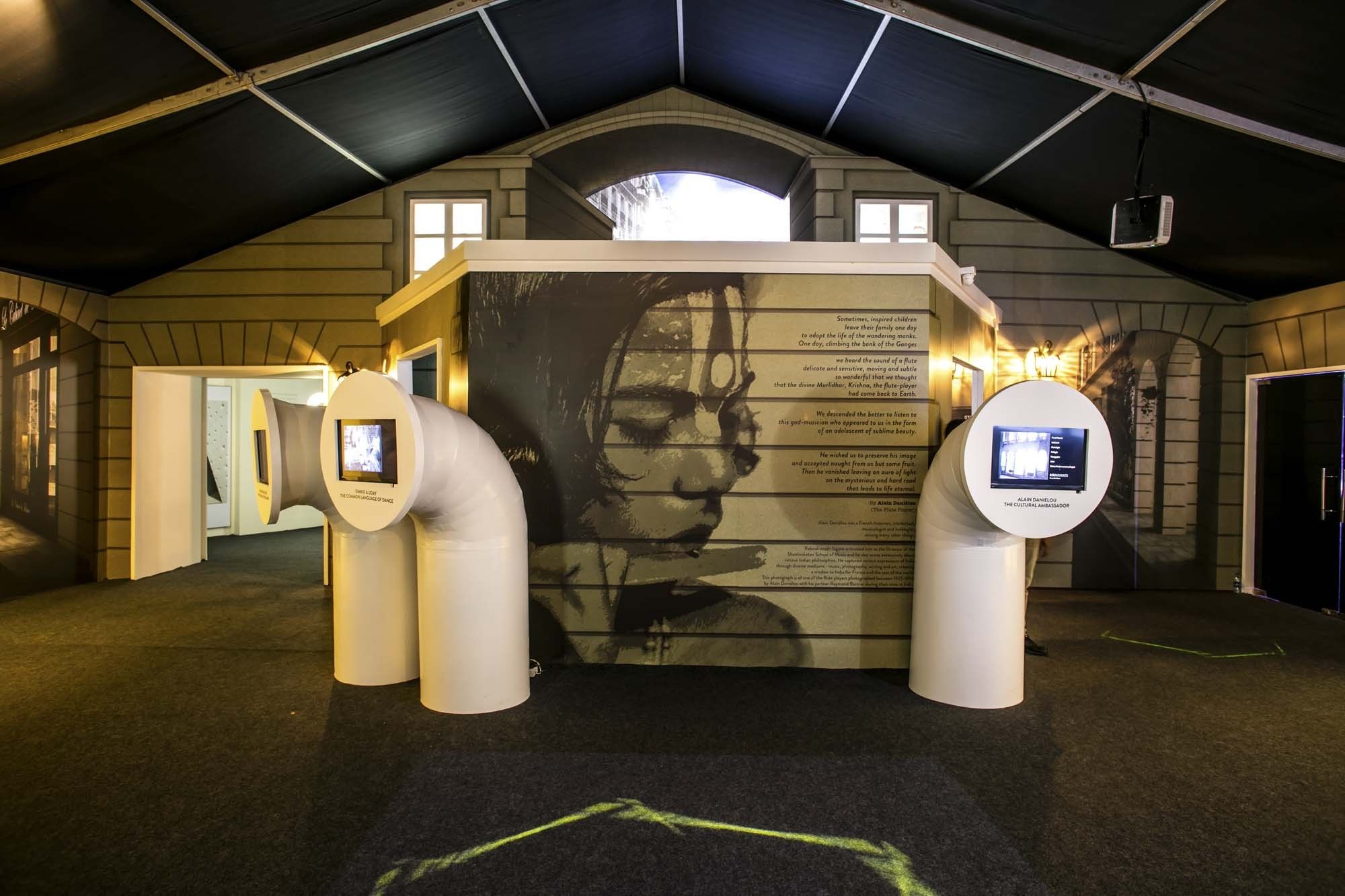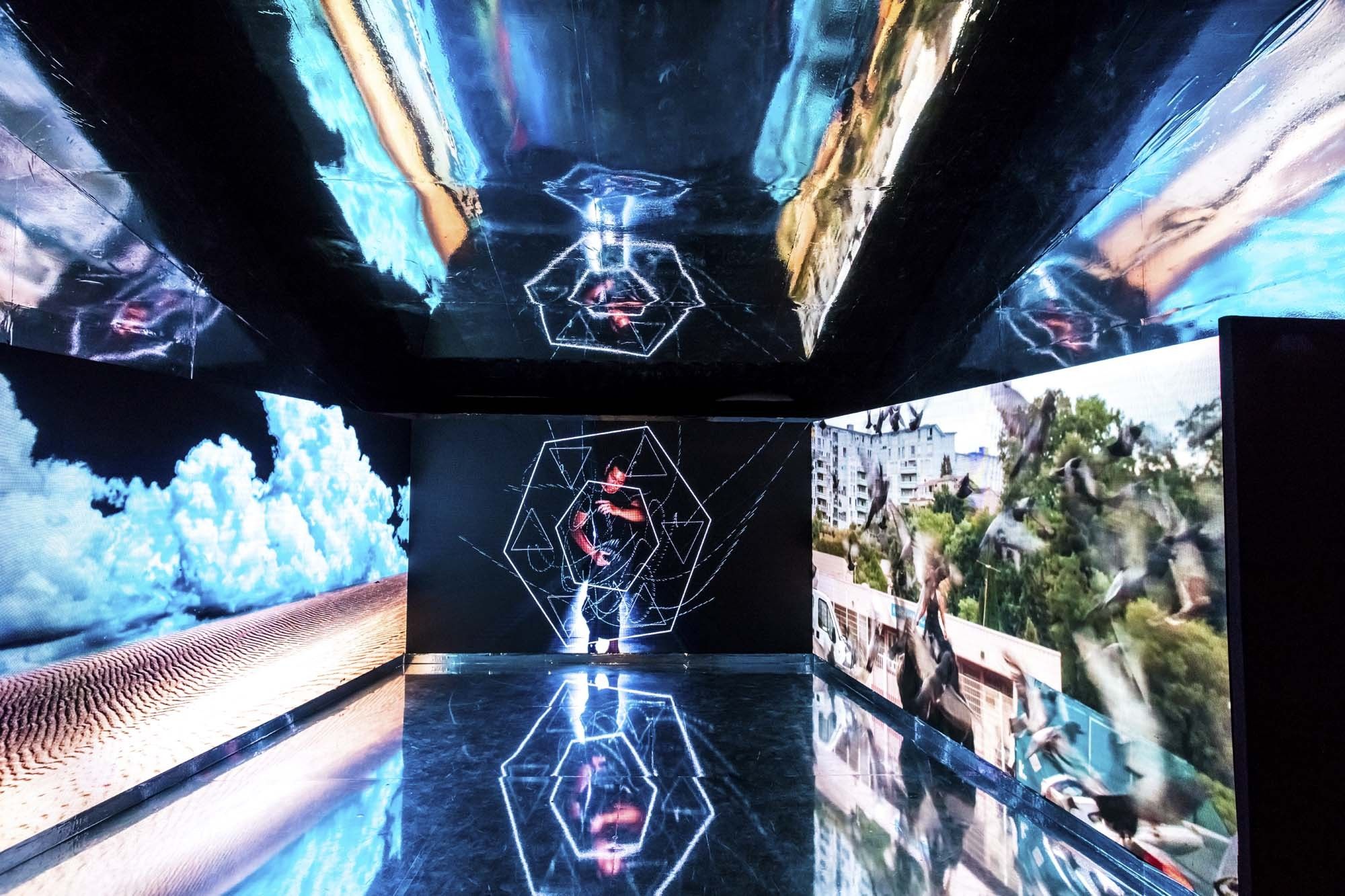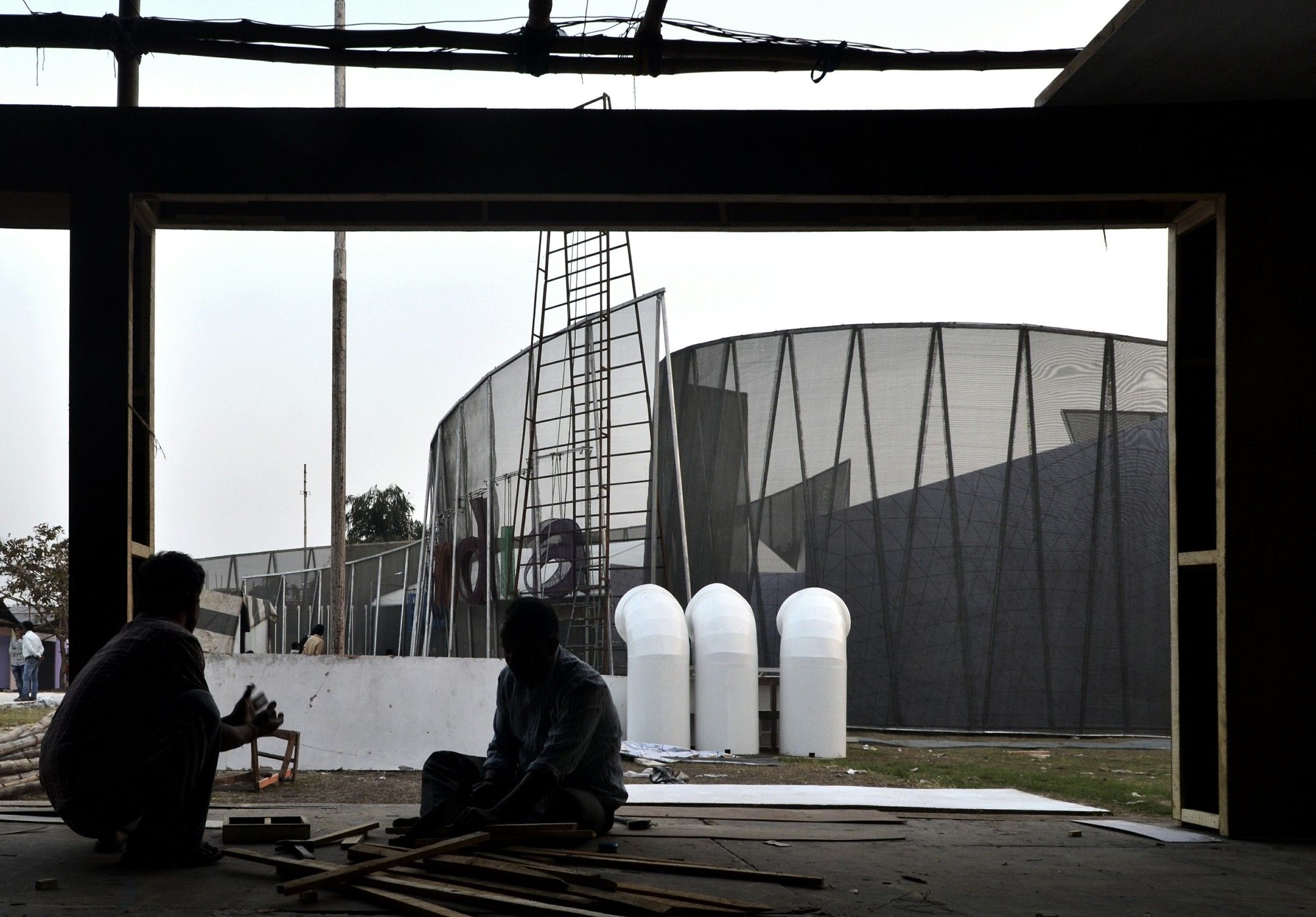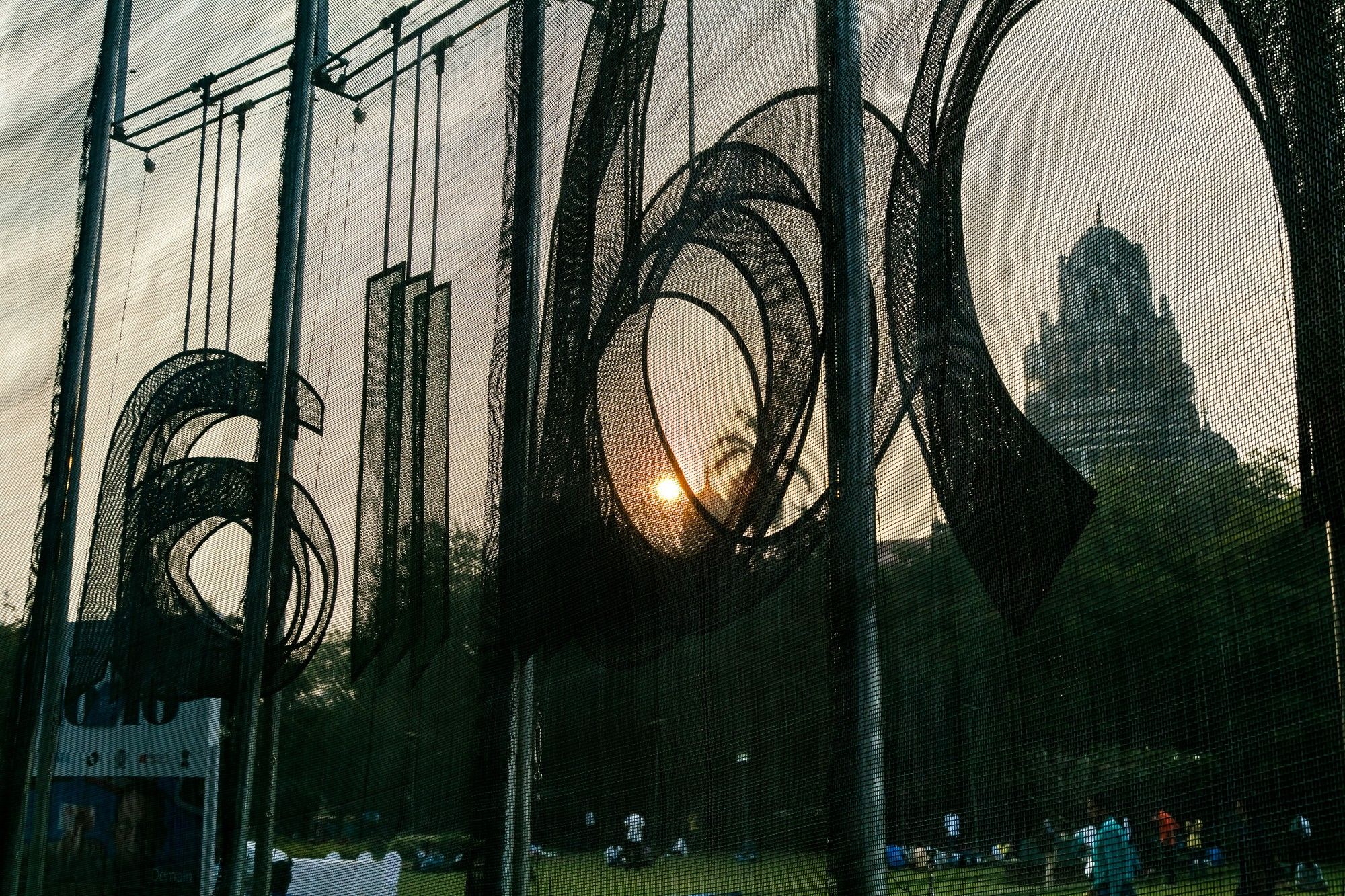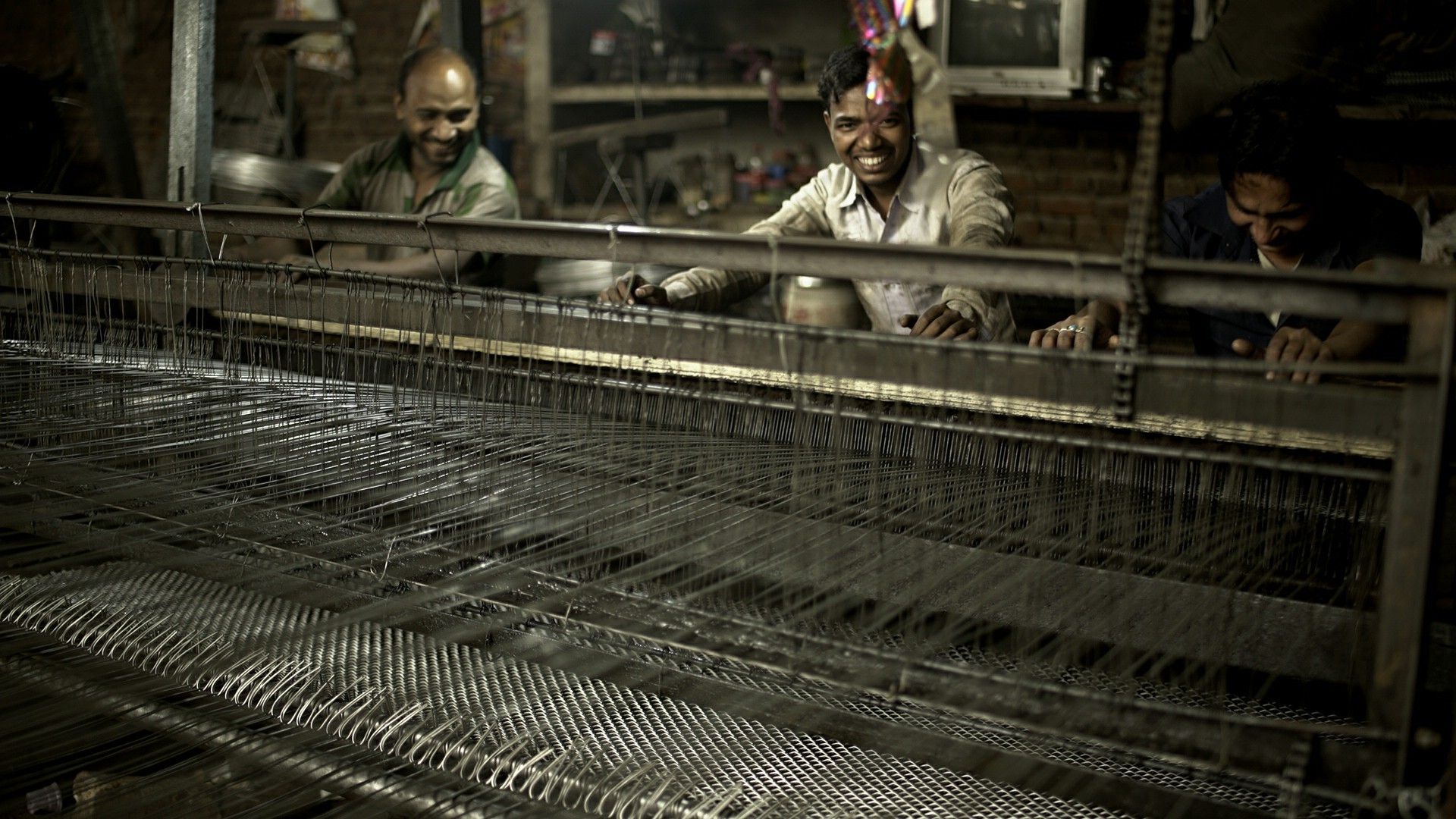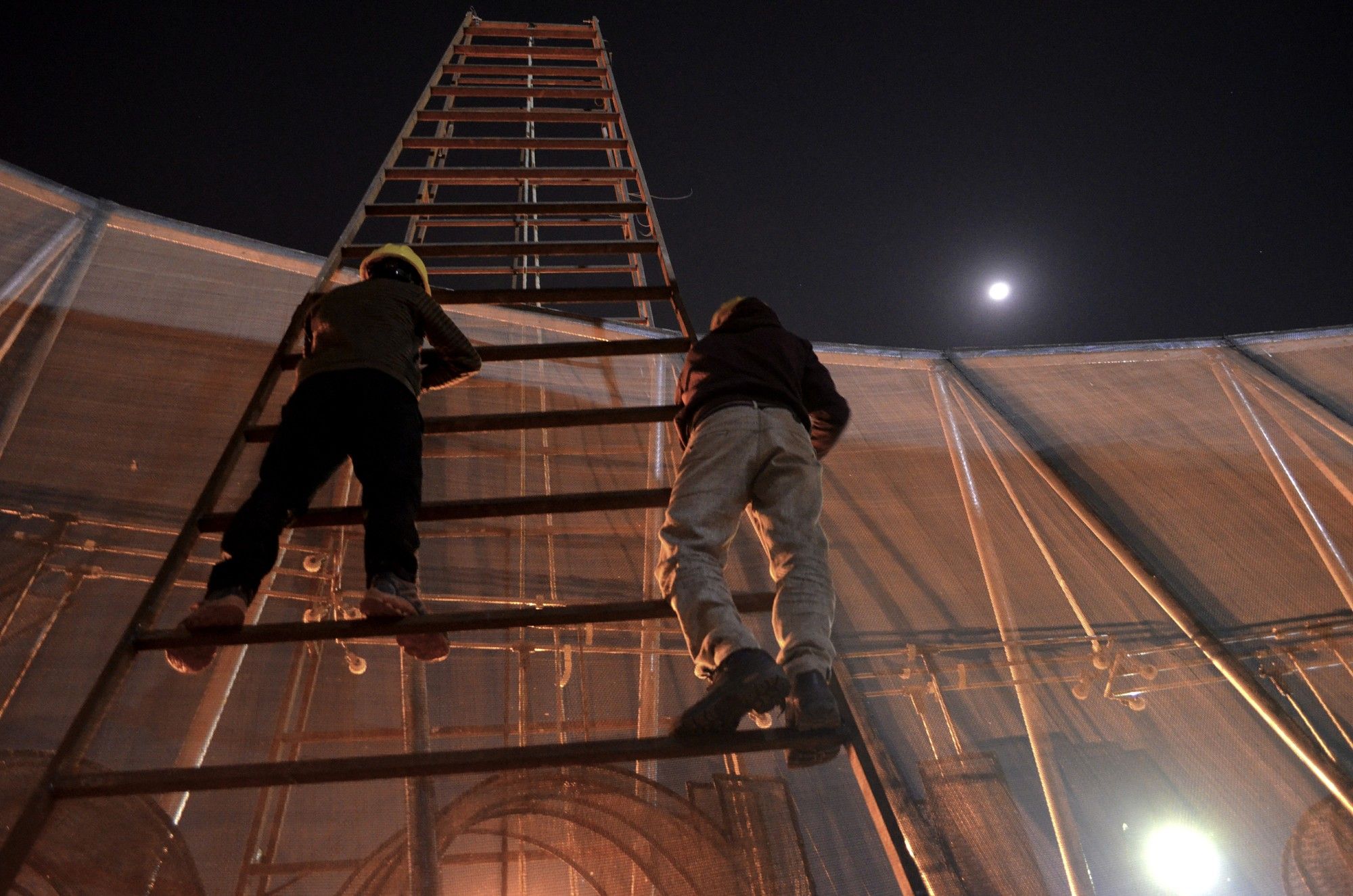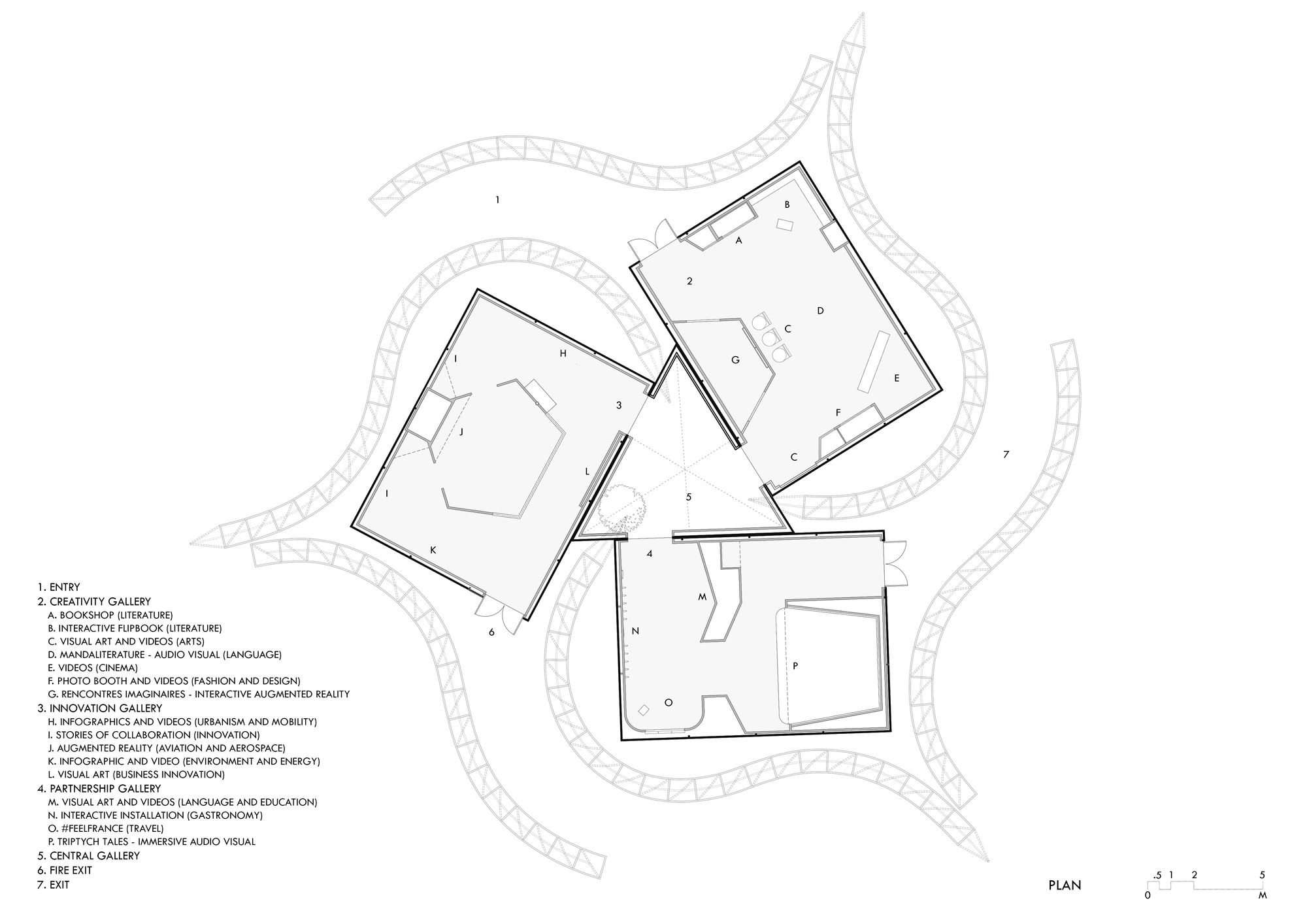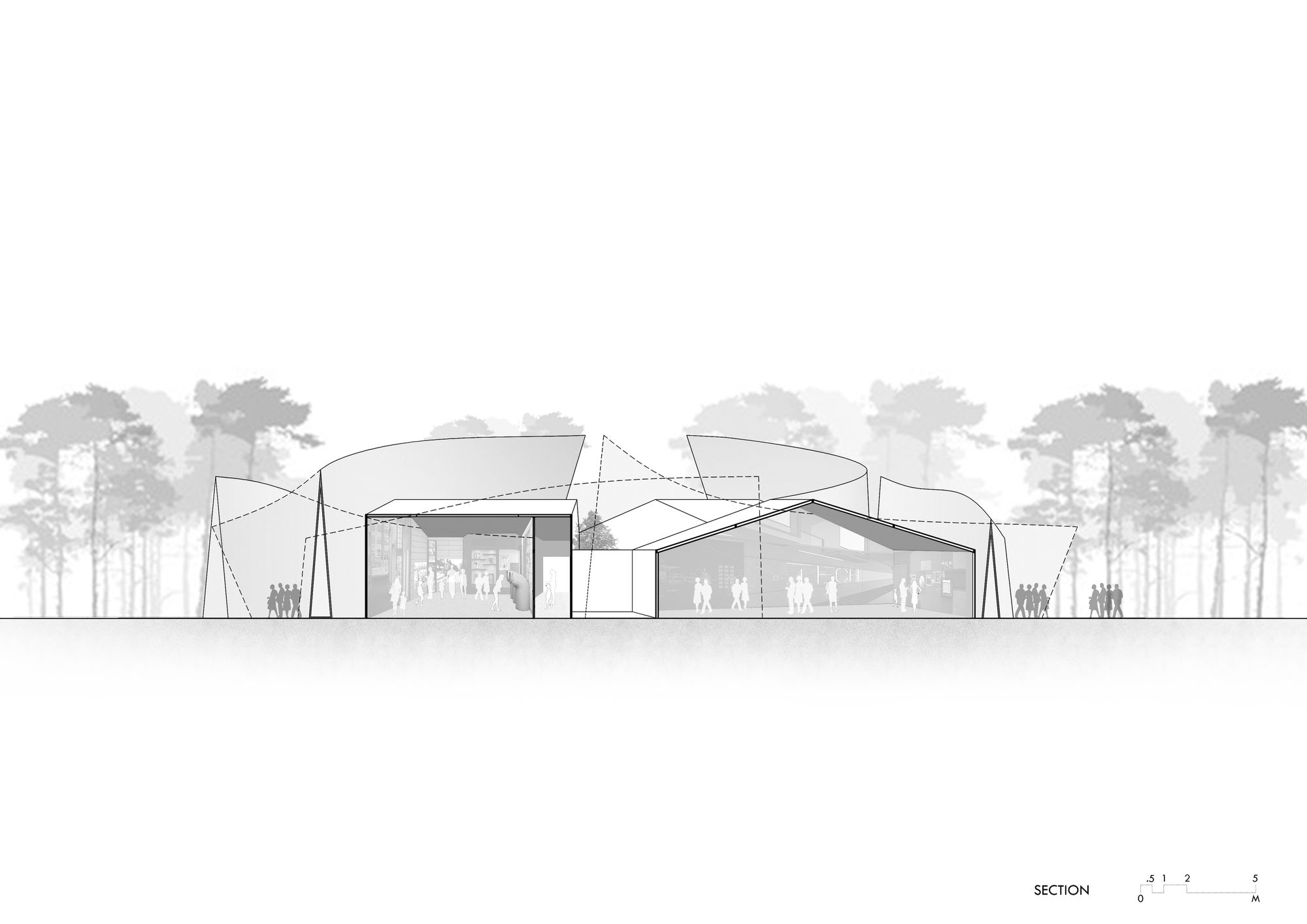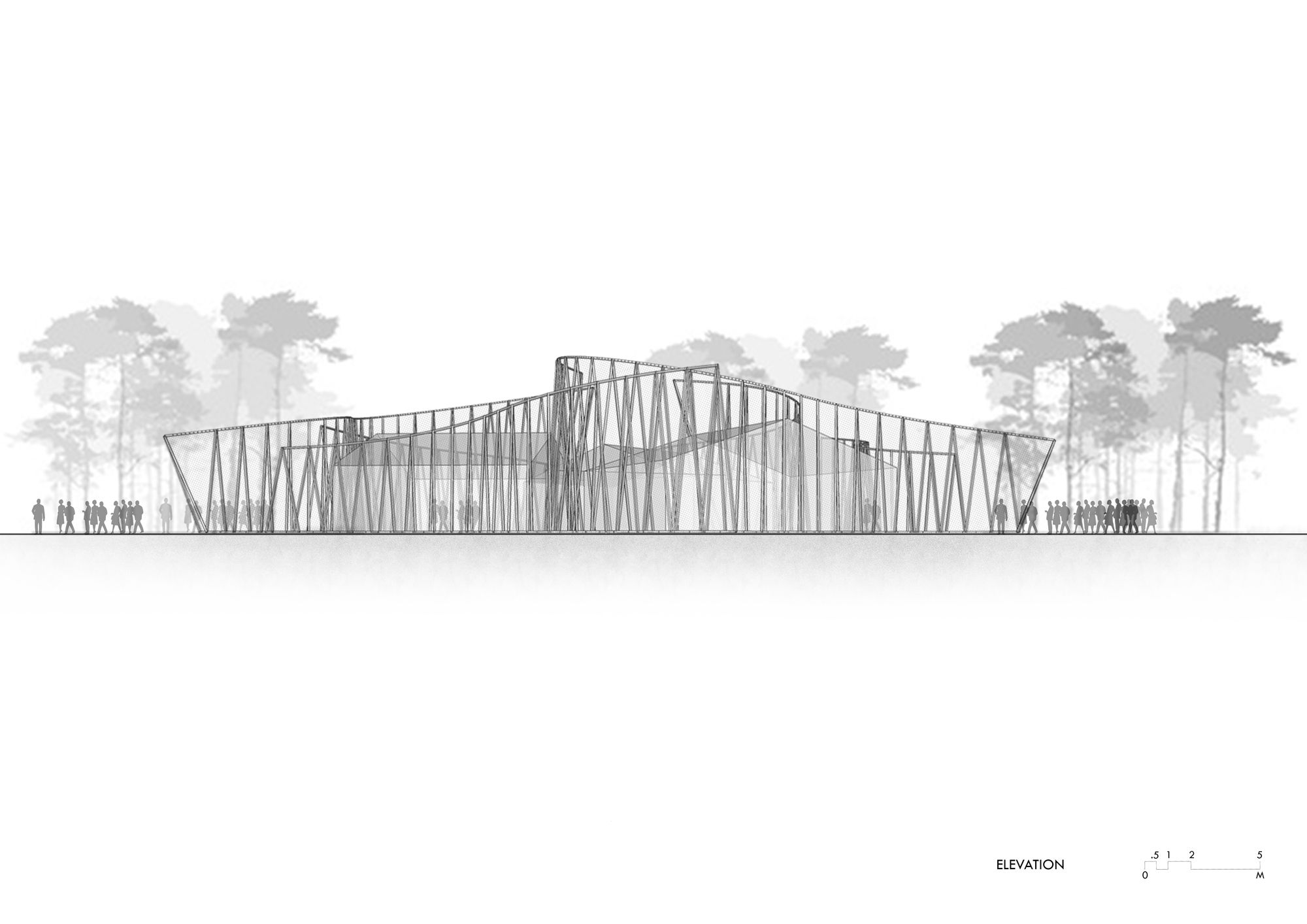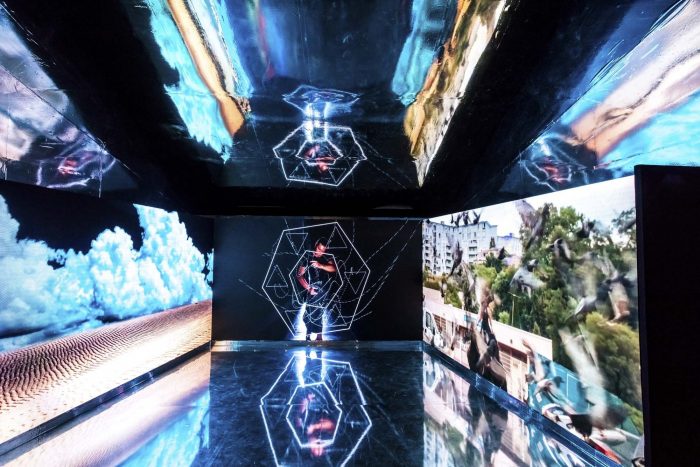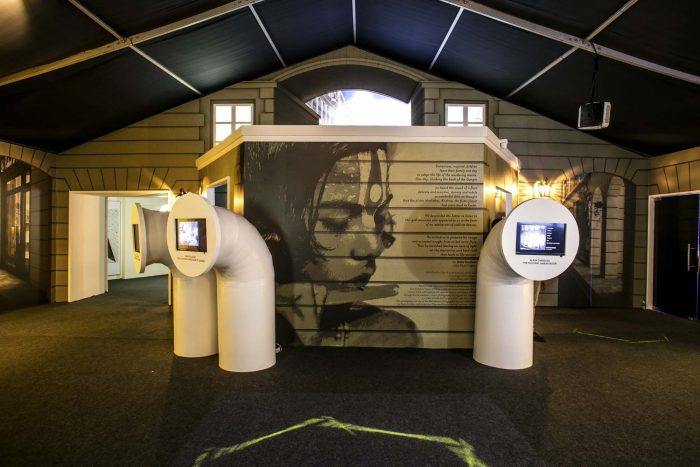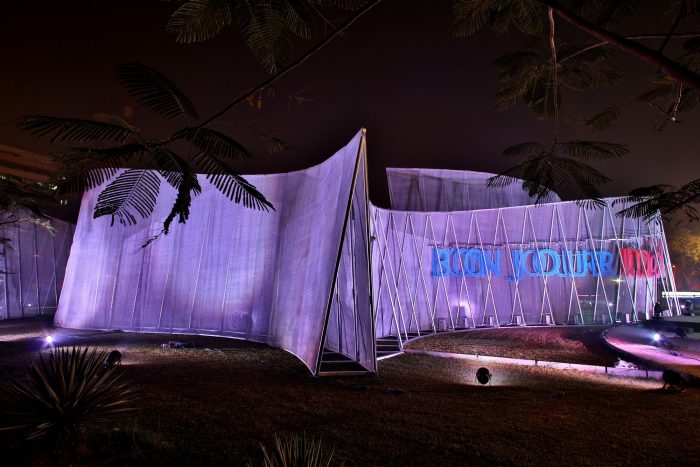Designed by SpaceMatters, The Bonjour India Experience was the flagship initiative of the Bonjour India 2017-2018, a festival that celebrated Indo-French collaborations through more than 300 events spread over four months across 33 Indian cities. At the heart of the festival, The Bonjour India Experience pavilion was a one-of-its-kind traveling exhibition at the intersection of art, architecture, design, and urbanism. The 9 meter high, 800 square meters, and 40-tonne installation traveled approx. 3500 kilometers from the iconic India Gate in Delhi to Cross Maidan Garden behind the historic Churchgate Station Mumbai to become the star attraction of the world’s largest book fair in Kolkata over a period of three months. It welcomed more than 180,000 visitors over a period of 30 odd days spread over the three cities.
One of the first decisions jointly taken by the clients and the design team lead by SpaceMatters was to locate the pavilion in public urban spaces. While this may seem like an obvious choice, similar cultural events in India have been largely confined to institutional spaces such as museums and cultural centers. Often perceived as elitist, these spaces cater to a small segment of the population and their ambiance is in stark contrast to the diverse energy of the urban public space in Indian cities. As cultural events retreat into gated zones the access to public space in Indian cities is also shrinking, increasingly being policed and monetized.
Thus, when asked to suggest an appropriate public space in their city, associates initially suggested commercial malls! The call to locate the pavilion in truly public urban spaces presented countless challenges and it was a complex undertaking to navigate the maze of permissions needed to mount installation of this scale in a public location. However, its interaction with the urban context became the defining characteristic of the pavilion and was instrumental to its success. The design had to balance the functional demands of a traveling pavilion with the stringent requirements of a sealed exhibition space required to safely house expensive audio-visual equipment while creating create a comfortable environment for the visitors. The pavilion had to be designed to be installed in a week and dismantled in three days in crowded public spaces without the use of heavy machinery (prohibited at the high-security sites); with the ease of traveling halfway across the country and adapting to new sites. To reconcile the mobile and temporal nature of the pavilion alongside the ambition to leave a memorable mark on the cities it traveled to, the pavilion had to create an iconic visual presence combined with a lightness of being.
The thematic focus of the Bonjour India festival was ‘Creativity, Innovation and Partnership’ between India and France. Embodying these themes, the form of the pavilion evolved from the idea of confluence, with 6 curves rising together to embrace three pavilions that highlight various aspects of Indo-French creativity, innovation & partnership. The metal curves, arranged in a modular symmetry spiraling out from a central core, consisted of a rhythmic arrangement of staggered, self-supporting steel members draped with 20,000 square feet of handwoven steel mesh. The massive self-supporting structure is designed down to the last joint to be flat packed and largely hand installed in the shortest possible time. Combining the precision of cutting-edge engineering and unique expression of craft, the design pays homage to the ingenuity and abstraction that is the hallmark of both French and Indian architecture. As an intervention in public space the pavilion is designed to integrate itself with the site conditions at each location. The metal members and mesh provide for varying gradations of visual permeability, allowing the structure to weave into the urban surroundings, both emerging from and merging into the context. Views of iconic monuments at each site, such as the India Gate in Delhi and the Churchgate Railway Terminus in Mumbai are framed within the layered silhouette of the structural contours and wire mesh. As the pavilion transforms with the play of light through day and night, its spiraling form becomes the pivot that reorganizes the nature of the urban open area while heightening curiosity amongst that outside to explore within. Twisting and turning, rising and falling from a height of 4 meters to 9 meters across its perimeter, the sculptural form of the pavilion transforms with motion as the visitors walk around it and into it.
Project Info:
Architects: SpaceMatters
Location: Rajpath Marg, India Gate, New Delhi, Delhi, India
Principal Architects: Amritha Ballal, Suditya Sinha
Project Architects: Divya Manaktola, Nishita Mohta
Team Architects: Gaurav Gupta, Sony Joshua, Pulkit Mogha, Devansh Mahajan, Sandeep Singh Rathore, Girisha Sethi, Akhilesh Yadav
Area: 8000.0 ft2
Project Year: 2018
Photographs: Hemant Chawla, Nishita Mohta, Achint Jain
Manufacturers: 3M, Philips, Asian Paints
Project Name: The Bonjour India Experience
